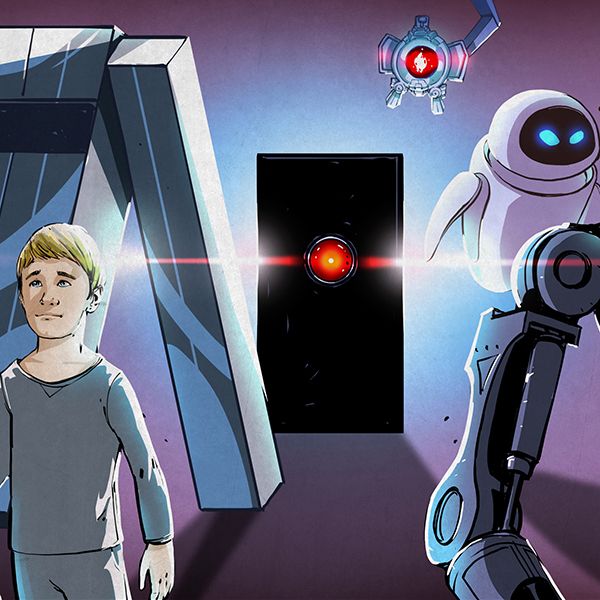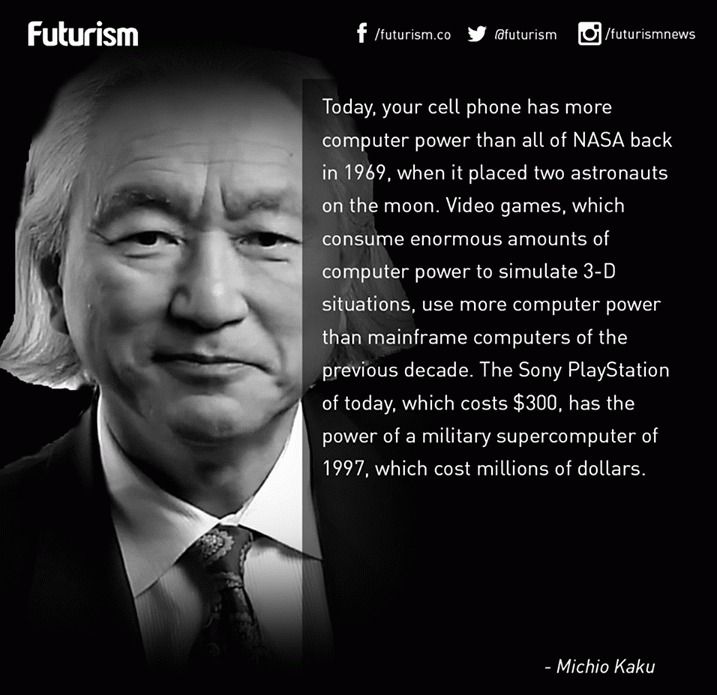Deputy defense secretary: Russia is preparing for all-robot fighting units.



With nine teams selected, the Squad X Core Technologies program will begin taking its first steps toward developing novel technology to deliver dismounted squads better collaboration ability, understanding of surroundings and effectiveness.

2016 will be the year of VR. Here’s how it will change everything from medicine to the military.

Launched in 1958, the Defense Advanced Research Projects Agency is behind some of the biggest innovations in the military — many of which have crossed over to the civilian technology market. These include things like advanced robotics, global positioning systems, and the Internet.
So what’s going to happen in 2045?
It’s pretty likely that robots and artificial technology are going to transform a bunch of industries, drone aircraft will continue their leap from the military to the civilian market, and self-driving cars will make your commute a lot more bearable.

BATH, Maine (AP) — The largest destroyer ever built for the U.S. Navy headed out to sea for the first time Monday, departing from shipbuilder Bath Iron Works and carefully navigating the winding Kennebec River before reaching the open ocean where the ship will undergo sea trials.
More than 200 shipbuilders, sailors and residents gathered to watch as the futuristic 600-foot, 15,000-ton USS Zumwalt glided past Fort Popham, accompanied by tugboats.
Kelley Campana, a Bath Iron Works employee, said she had goose bumps and tears in her eyes.

Sir Winston Churchill often spoke of World War 2 as the “Wizard War”. Both the Allies and Axis powers were in a race to gain the electronic advantage over each other on the battlefield. Many technologies were born during this time – one of them being the ability to decipher coded messages. The devices that were able to achieve this feat were the precursors to the modern computer. In 1946, the US Military developed the ENIAC, or Electronic Numerical Integrator And Computer. Using over 17,000 vacuum tubes, the ENIAC was a few orders of magnitude faster than all previous electro-mechanical computers. The part that excited many scientists, however, was that it was programmable. It was the notion of a programmable computer that would give rise to the  idea of artificial intelligence (AI).
idea of artificial intelligence (AI).
As time marched forward, computers became smaller and faster. The invention of the transistor semiconductor gave rise to the microprocessor, which accelerated the development of computer programming. AI began to pick up steam, and pundits began to make grand claims of how computer intelligence would soon surpass our own. Programs like ELIZA and Blocks World fascinated the public and certainly gave the perception that when computers became faster, as they surely would in the future, they would be able to think like humans do.
But it soon became clear that this would not be the case. While these and many other AI programs were good at what they did, neither they, or their algorithms were adaptable. They were ‘smart’ at their particular task, and could even be considered intelligent judging from their behavior, but they had no understanding of the task, and didn’t hold a candle to the intellectual capabilities of even a typical lab rat, let alone a human.

Here’s a very in depth, approximately 6,000 word story (broken into 5 articles) with many pictures on transhumanism–from one of the world’s leading tech sites: The Verge.
Zoltan Istvan is very worried about the superintelligent machines.
He says the war over artificial intelligence will be worse than the Cold War nuclear arms race — much worse. It will be far more deadly, and whoever wins will control the world, eternally. This artificial intelligence might be being developed right now, he says, for all we know. At a government facility in the middle of the Arizona desert, perhaps.
But this is not what Zoltan Istvan is most afraid of, and neither is it the weirdest thing he will tell me in our week together driving 400 miles across the Southwest in his 40-year-old “Immortality Bus,” crudely fashioned into the shape of a coffin. As the presidential candidate of the Transhumanist Party, Zoltan Istvan is dedicated to spreading transhumanism’s gospel, like some modern day Ken Kesey who doesn’t even need acid for his trip.
Zoltan Istvan very much wants to be the next president of the United States.

The Pentagon has quietly put out a call for vendors to bid on a contract to develop, execute and manage its new cyber weaponry and defense program. The scope of this nearly half-billion-dollar “help wanted” work order includes counterhacking, as well as developing and deploying lethal cyberattacks — sanctioned hacking expected to cause real-life destruction and loss of human life.
In June 2016, work begins under the Cyberspace Operations Support Services contract (pdf) under CYBERCOM (United States Cyber Command). The $460 million project recently came to light and details the Pentagon’s plan to hand over its IT defense and the planning, development, execution, management, integration with the NSA, and various support functions of the U.S. military’s cyberattacks to one vendor.
While not heavily publicized, it’s a surprisingly public move for the Pentagon to advertise that it’s going full-on into a space that has historically been kept behind closed doors. Only this past June, the Department of Defense Law of War Manual (pdf) was published for the first time ever and included Cyber Operations under its own section — and, controversially, a section indicating that cyber-weapons with lethal outcomes are sanctioned by Pentagon doctrine.

Major technological changes have a transformative effect on every aspect of human life. Increasingly intelligent programs are responsible to paradigm shifts at a steadily accelerating rate, a trend which acceleration theories suggest is all but guaranteed to continue.
We explore some of the most disruptive applications of artificial intelligence, examining in particular the impact of computer trading programs (algotraders) on stock markets. We explore some such imminent technologies (such as autonomous military robots) and their consequences (eg on job markets). We conclude with a discussion in the potentially irreversible consequences of this trend, including that of superintelligence.
